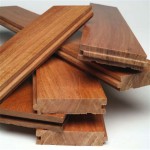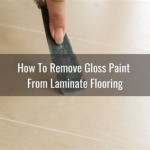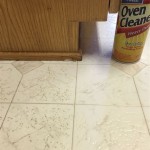How to Remove Adhesive Glue From Concrete Floors
Adhesive glues, often used for installing flooring, can leave stubborn residues on concrete floors. This can create an unsightly appearance and pose problems when applying new flooring. Removing adhesive glue from concrete can be a challenging task, but it's achievable with the right approach and tools. This article will guide you through the process, providing practical tips and solutions for tackling this common problem.
Understanding Adhesive Types and Their Removal
The first step in removing adhesive glue from concrete is understanding the type of adhesive you are dealing with. Common adhesives used for flooring include: *
Epoxy adhesives:
Strong and durable, epoxy adhesives are often used for high-traffic areas. They are generally more difficult to remove than other adhesives. *Polyurethane adhesives:
Known for their flexibility, polyurethane adhesives are commonly used for wood flooring. They can be more easily removed than epoxy adhesives. *Contact adhesives:
These adhesives create a strong bond that is difficult to break. They are often used for vinyl flooring installation.The removal method will vary depending on the type of adhesive. Some adhesives can be softened and scraped away, while others require specialized chemical solutions. Determining the type of adhesive will help you choose the most effective removal method.
Mechanical Removal Methods for Adhesive Glue
Mechanical removal methods involve physically removing the adhesive using tools. These methods are often effective for softened adhesive and can be used for various adhesive types. Here are common mechanical removal techniques:
Scraping and Chipping
This method involves using a scraper or chisel to remove the adhesive from the concrete surface. Softening the adhesive with heat or chemicals can make this process easier. A putty knife, scraper, or chisel can be used, depending on the adhesive's thickness and hardness. Remember to use caution and wear protective gear when working with sharp tools.
Sanding
Sanding can be used to remove adhesive residue, especially for thin layers. Use a coarse-grit sandpaper for heavy adhesive buildup and gradually decrease the grit for finer finishing. Sanding can generate dust, so wear a dust mask and ensure proper ventilation during the process.
Wire Brushing
A wire brush can be used to remove adhesive residue from rough concrete surfaces. The brush's bristles can loosen and remove the adhesive. However, be cautious not to damage the concrete surface with excessive brushing.
Chemical Removal Methods for Adhesive Glue
Chemical removal methods utilize specialized adhesive removers to dissolve or loosen the adhesive, making it easier to remove. These methods are often effective for stubborn adhesive residues that cannot be removed mechanically. However, using chemical removers requires caution, as they can be harmful if not handled properly.
Adhesive Remover Solutions
Various adhesive removers are available on the market, typically formulated for specific adhesive types. Some common ingredients in adhesive removers include: *
Acetone:
An effective solvent for many adhesives, acetone is readily available and relatively inexpensive. *Mineral spirits:
A petroleum-based solvent that can be used to remove oil-based adhesives. *Methyl ethyl ketone (MEK):
A powerful solvent that can remove stubborn adhesive residues.Always test the adhesive remover on an inconspicuous area of the concrete floor before applying it to the entire surface. This helps ensure that the remover does not damage the concrete and that it is effective for removing the adhesive.
Safety Precautions When Removing Adhesive Glue
Removing adhesive glue from concrete floors can involve working with chemicals and sharp tools. It is essential to prioritize safety throughout the process by following these precautions:
Wear Protective Gear
Always wear appropriate protective gear, including gloves, a dust mask, and eye protection, when working with adhesive removers and tools. This will protect you from harmful fumes, dust, and potential injury.
Provide Adequate Ventilation
Ensure proper ventilation when working with adhesive removers. Open windows and doors to allow fresh air to circulate, preventing the buildup of harmful fumes. If working in a confined space, consider using a respirator.
Avoid Contact with Skin and Eyes
Adhesive removers can be irritating or harmful to skin and eyes. Avoid direct contact with these substances. If contact occurs, rinse the affected area thoroughly with water and seek medical attention if irritation persists.
Proper Storage and Disposal
Store adhesive removers in tightly sealed containers in a cool, dry place, away from heat and open flames. Dispose of leftover adhesive remover and any contaminated materials according to local regulations.

How To Remove Carpet Glue From Concrete 4 Proven Ways Network

Best Ways To Take Out Even Impossible Remove Glue From Floors

How To Remove Old Floor Tile Adhesive All Stripped

How To Remove Carpet Glue From Concrete 4 Proven Ways Network

How To Remove Adhesive From Concrete Floors 5 Diy Ways Get Glue Off

How To Remove Adhesive From Concrete Floors 5 Diy Ways Get Glue Off

How To Remove Carpet Glue From Concrete Floor Step By Guide

How To Remove Carpet Glue From Concrete Floor Step By Guide

How To Remove Adhesive From Concrete Floors 5 Best Ways Get Rid Of Glue On Wood Floor

How To Remove Carpet Glue From Concrete Floor Step By Guide
See Also







